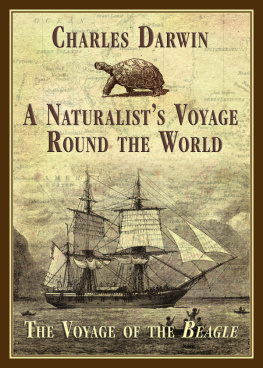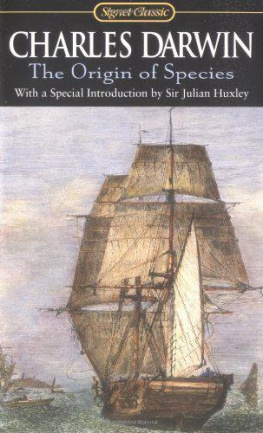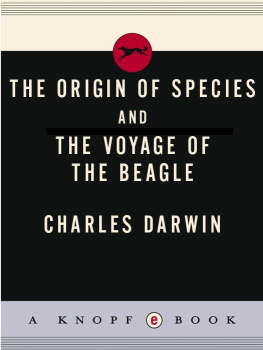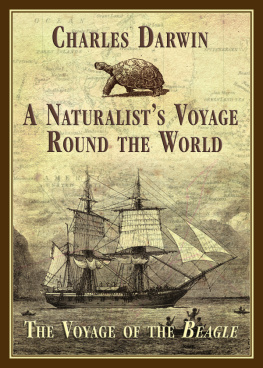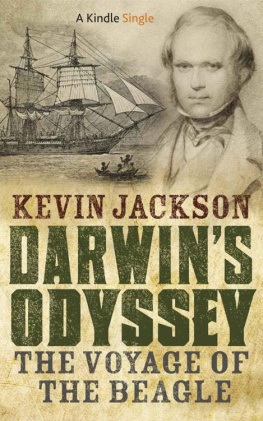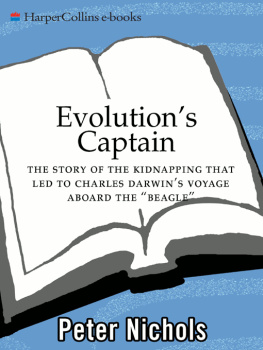First published 1992 by Pickering & Chatto (Publishers) Limited
Published 2016 by Routledge
2 Park Square, Milton Park, Abingdon, Oxon OX14 4RN
Routledge is an imprint of the Taylor & Francis Group, an informa business
Copyright Taylor & Francis
All rights reserved. No part of this book may be reprinted or reproduced or utilised in any form or by any electronic, mechanical, or other means, now known or hereafter invented, including photocopying and recording, or in any information storage or retrieval system, without permission in writing from the publishers.
Notice:
Product or corporate names may be trademarks or registered trademarks, and are used only for identificationand explanation without intent to infringe.
Darwin, Charles
The works of Charles Darwin
1. Evolution
I. Title II. Barrett, Paul H.
575 QH366
ISBN 13: 978-1-85196-205-1 (hbk)
Part III: Birds by John Gould, 1841.
Although Goulds name appears on the title page, he was away collecting birds and mammals in Australia for much of the time that this Part was being written. He was only able to prepare brief notes on some of the species, and much of the finished text was by Darwin himself, often writing in the first person. Darwin was given much help by George Robert Gray, an ornithological assistant on the staff of the British Museum. At the end of the fifth and last number there are anatomical descriptions of twelve species. These are by Thomas Campbell Eyton, a Shropshire friend of the Darwin family, who had specialized in the osteology of birds. The fifty superb plates were by Goulds wife Elizabeth.
Amongst the birds described were thirteen species of rather drab finches of the genus Geospiza, which are confined to the Galapagos Islands. These, with some relatives, were to become known, a hundred years later, as Darwins finches. Darwin himself had paid little attention to them when he was in the islands, but they were to have great influence on evolutionary theory later.
Reproduction of the plates
The University of London have kindly given us permission to reproduce the colour plates from their copy of the original numbers. Several of the captions were altered when the numbers were rearranged for publication in book form and we have accordingly reset the captions to conform with the text set from the British Library copy of the bound volume.
The original volumes of the Zoology were, unlike all Darwins other books, printed in quarto. In the present edition the illustrations have been reduced, in this volume to 70 per cent of their original dimensions.
Note
Freeman, R. B. The works of Charles Darwin, an annotated bibliographical handlist, second edition, Folkestone, 1977, p. 29.
Birds
DESCRIBED BY
JOHN GOULD
WITH
A NOTICE OF THEIR HABITS AND RANGES
BY
CHARLES DARWIN
AND WITH AN ANATOMICAL APPENDIX
BY
T. C. EYTON
CORRIGENDA
I am indebted to Mr G. R. Gray for the following remarks and corrections:
Page 13, to Milvago ocrocephalus, Spix. add
Polyborus ocrocephalus, Jard. &Selbys Ill., t. 5.
Page 15, Milvago leucurus, add
Falco Australis, Jard. & Selbys Ill. Orn., n. s. pl. 24.
Page 49, Serpophaga, Gould, is probably synonymous with Euscarthmus, Pr. Max.
Page 56, Agriornis, Gould, is synonymous with Dasycephala of Swainson, and Tamnolanius, of Lesson; the species therefore should be
sp. 1. D. lividus, G. R. Gray.
Thamnophilus lividus, Kittl. Voy. de Chili, pl. 1.
Tyrannus gutturalis, Eyd. & Gerv. etc.
sp. 2. D. striata, G. R. Gray.
Agr. striatus, Gould.
Agr. micropterus, juv., Gould, sp. 3.
Page 57, sp. 4. D. maritima, G. R. Gray.
Agr. maritimus, G. R. Gray, etc.
Page 66. The generic appellation of Opetiorhynchus, was adopted after the suggestion of Mr Gould; since its publication, however, I have considered that it might cause confusion with Furnarius, of Vicillot, as it is Temmincks name for the identical same division, therefore only a synonym, and are on that ground induced to change and propose the name of Cinclodes, which has been adopted by a Continental writer. The species should be altered thus:
Page 66, Sp. 1. Cinclodes vulgaris, G. R. Gray.
Page 67, sp. 2. C. Patagonicus, G. R. Gray, List of Genera of Birds.
sp. 3. C. antarcticus, G. R. Gray.
Cinclodes fuliginosus, Less.
Page 68, sp. 4. C. nigrofumosus, G. R. Gray.
Page 69, Eremobius, being previously employed, it is changed to Enicornis, G. R. Gray. This species to
En. phoenicurus, G. R. Gray, List of the Genera of Birds.
Page 70, Rhinomya, being also previously employed; it is therefore changed to Rhinocrypta, G. R: Gray. The species to R. lanceolata, G. R. Gray.
Page 76, for Synallaxis major, Gould, read Anumbius acuticaudatus, G. R. Gray.
Furnarius annumbi, Vieill.
LAnnumbi, Azara, No. 222.
Anthus acuticaudatus, Less.
Anumbius anthoides, DOrb. &Lefr.
Page 94, Fringilla fruticeti, Kittl. gives place to
Fringilla erythrorhyncha, Less. Voy. Thetis, ii, p. 324.



